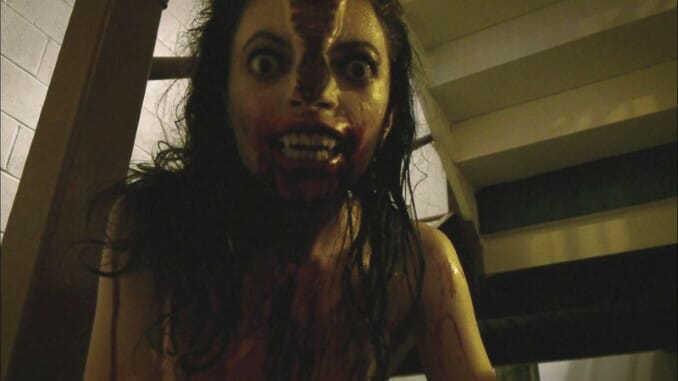Introducing Endless Mode: A New Games & Anime Site from Paste
Paste’s ABCs of Horror 2 is a 26-day project that highlights some of our favorite horror films from each letter of the alphabet. The only criteria: The films chosen can’t have been used in our previous Century of Terror, a 100-day project to choose the best horror film of every year from 1920-2019, nor previous ABCs of Horror entries. With many heavy hitters out of the way, which movies will we choose?
The recent premiere of V/H/S/94 on Shudder has once again called attention to two of the driving forces of the horror genre in the last two decades: Found footage and anthology movies. Since the time of The Blair Witch Project, but especially in the years since the first Paranormal Activity became an overnight sensation, the found footage format has been a powerful gimmick for indie horror filmmakers in particular, resulting in films both genuinely scary (Grave Encounters, Gonjiam: Haunted Asylum) and atrocious (…uh, Atrocious) in their ineptitude. But even in the midst of a flood of samey-looking found footage horror, 2012’s V/H/S immediately stood out at the time for the way it fused a modern style of presentation with one of the genre’s most august traditions, the anthology film. In the process, it spawned its own fresh wave of imitators—always the sign of a horror film that has squarely hit its mark.
The history of horror anthologies is a long and decorated one, stretching back at least to 1945’s superlative Dead of Night, whose almost Christopher Nolan-esque structure was not just decades but half a century or more before its time. Through the 1960s, 1970s and 1980s, horror anthologies became commonplace, morphing to reflect each era, whether it was the Roger Corman/Edgar Allan Poe vehicles of the ‘60s, the irony-laden British catalog of anthology specialists Amicus in the 1970s, or the increasingly grisly offerings of the 1980s, of which Creepshow will always be a preeminent example. V/H/S, on the other hand, turned over a new leaf on the genre even as it merged it with the trappings of found footage horror, highlighting the opportunity to use the horror anthology as a showcase for up-and-coming indie horror talents and shoestring visual FX.
This is a quality common to all the subsequent V/H/S sequels to some extent, but the equity between offerings is noticeably most pronounced in the original installment, and least so in V/H/S/94, which seems to be built almost entirely around one extra-long chapter in the form of Timo Tjahjanto’s “The Subject.” Almost a decade ago, on the other hand, the original benefited heavily from the more naturalistic framing device of Adam Wingard’s “Tape 56,” in which a gang of prowlers break into a dilapidated house, only to find a corpse and a pile of VHS cassettes. No other entry in the series has provided such a simple and effective wraparound story as an excuse for why we’re about to indulge in a series of WTF found footage nuggets, and each director is subsequently given their own moment to shine.
Of the segments that follow, the most praise over the years has been directed at “Amateur Night,” the story from David Bruckner, who has since gone on to produce the likes of The Ritual, The Night House and the upcoming Hellraiser reboot. The story of a trio of bros attempting to trick a woman into appearing in an amateur porn video, only to find that she’s something other than human, it has a certain misanthropic joie de vivre that is largely lost in its extended 2016 adaptation Siren. As the years have gone by, however, the evolution of the horror genre has highlighted Joe Swanberg’s “The Sick Thing That Happened to Emily When She Was Younger” as perhaps the strongest (and definitely the most influential) installment of the original V/H/S, with a face-to-face video chat format that presaged the likes of Unfriended or 2020’s well-liked Host. Its story about a woman being gaslit by a significant other and robbed of her very biological agency by sinister forces is as uncomfortable to watch today as it was then.
In retrospect, however, the V/H/S lineup is remarkably balanced though quite eclectic, from the intimate relationship horror of Ti West’s “Second Honeymoon” to the FX-laden spectacular of “10/31/98,” from future Ready or Not and Southbound scribes Radio Silence. It is a true anthology; schizophrenic in focus and individualistic in style, the product of ambitious creatives who seem to have been given the green light to follow their morbid whims. A decade after its initial release, it remains a proud footnote in the careers of half a dozen filmmakers who have gone on to grander and grosser things.
Jim Vorel is a Paste staff writer and resident horror guru. You can follow him on Twitter for more film and TV writing.
